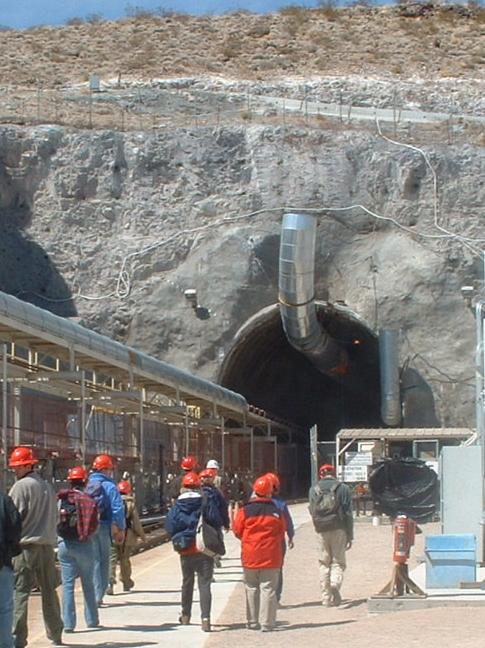Yucca_Mountain entrance.jpg

Part 2 of 3 Parts (Please read Part 1 first)
The industrial conglomerate Allied Corp. has now become part of the chemical giant Honeywell. Allied was an American company formed in 1920 and had operations in the chemical, aerospace, automotive, oil and gas industries. Allied partially built the nation’s first nuclear fuel reprocessing facility in Barnwell, South Carolina, in the early 1970s. In 1985 Allied merged with the Signal Companies to become AlliedSignal. In 1999, AlliedSignal bought Honeywell and adopted its name.
In April of 1977 Carter banned nuclear waste recycling. This was meant to be a show of personal restraint designed to give the U.S. the moral high ground to urge other countries not to develop more nuclear enrichment capabilities. The recycling ban came three years after India became the first country to develop an atomic bomb since much of the world signed on to the 1968 Treaty on the Non-Proliferation of Nuclear Weapons.
In 1978, the U.S. Department of Energy began studying whether the federal government could bury all its spent nuclear fuel permanently in an old salt mine under Nevada’s Yucca Mountain. Carter’s successor, President Ronald Reagan, reversed the ban on nuclear recycling.
Reagan signed the Nuclear Waste Policy Act in 1982, which shifted responsibility for spent nuclear fuel from the utilities generating the waste to the federal government. reprocessing. In 1999, the U.S. government promised to construct a geological repository for spent nuclear fuel that would be paid for by a fee charged to the operators of U.S. commercial power reactors. In 1982, Reagan signed the Nuclear Waste Policy Act in 1982, which shifted responsibility for spent nuclear fuel from the utilities generating the waste to the federal government. This eliminated any financial incentive for private companies to come up with a way to deal with the spent nuclear fuel.
Unfortunately, as administrations changed, the U.S. government decided to cancel the Yucca Mountain facility. The billions of dollars that Allied Corp lost on the Yucca Mountain facility dissuaded any other companies from attempting to build a nuclear recycling plant in the U.S.
In the meantime, construction of new commercial nuclear reactors in the U.S. slowed. Vast deposits of uranium across the American West and in trading partners like Canada insured that there would be plenty of fuel for future reactors. This reduced interest in recycling spent nuclear fuel into new fuel.
In the 1990s, the Clinton’s administration made a deal with the newly post-Soviet Russia to buy any nuclear fuel made from disassembled atomic weapons. The weapons-grade materials were removed from nuclear warhead and then diluted with U-238 until they were below twenty percent fissile materials which would be suitable for reactor fuel. Unable to compete with the cheap imports, much of the domestic nuclear enrichment industry went out of business.
In the early 2000s, the U.S. planned a new reactor building program as part of an effort to cut carbon emissions and reduce dependence on imported fossil fuels. President George W. Bush pushed to finish building the Yucca Mountain storage facility. Congress funded the creation of a research program for nuclear recycling. This program was called the Advanced Fuel Cycle Initiative. In 2006, that program was integrated into the Global Nuclear Energy Partnership. The partnership is a U.S.-led effort to promote safety standards for nuclear facilities worldwide. It also limited which countries could purchase uranium-enrichment technologies.
Please read Part 3 next